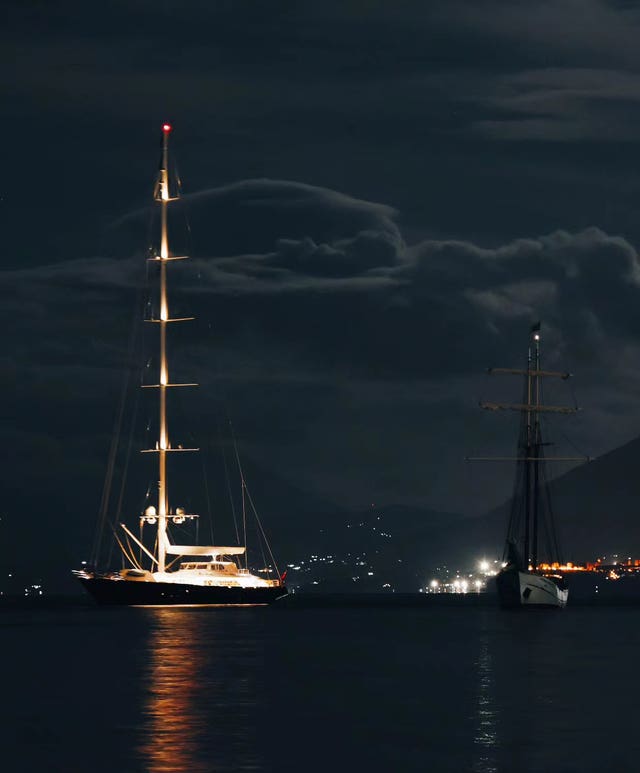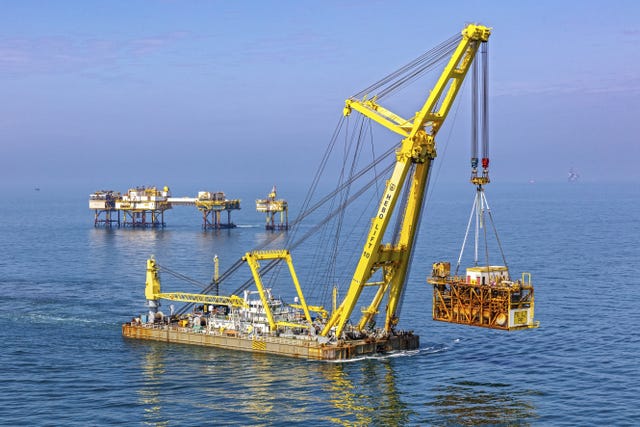First pieces of Mike Lynch’s sunken superyacht brought to surface
Bayesian’s main boom, a pole which holds the bottom of the sail, and its anchor, have been recovered from the seabed.

The first pieces of tech tycoon Mike Lynch’s sunken superyacht have been brought to the surface in Sicily.
Bayesian’s main boom, a pole which holds the bottom of the sail, and its anchor, have been recovered from the seabed.
Salvors used a diamond cutting wire on the boom, sail and furling gear near the mast and lifted them onto Hebo Lift 2, a multi-purpose floating barge equipped with diving and remotely-operated underwater vehicle systems as well as a support tug.

A remote-controlled submersible was then used to cut one of the vessel’s anchor chains, allowing it to be brought up.
They are to be taken to nearby Termini Imerese – a town where Italian prosecutors investigating the sinking are based – by a tug and brought ashore.
More specialist equipment required for the eventual lifting of the Bayesian will be loaded onto the 5,695-gross-tonne Hebo Lift 10, said to be one of the most powerful maritime cranes in Europe.
Salvage experts from Dutch firms Hebo and SMIT Salvage are increasing the use of remote-controlled tools after a diver died during underwater work on May 9.
More equipment and personnel are being sourced from across Europe, including an extra remote-controlled submersible.
Meanwhile, progress has been made in securing the Bayesian’s tank vents and openings to reduce the chances of pollution during future operations.

No pollution has been reported to date.
Work to position steel lifting slings and other lifting gear under the Bayesian has also begun.
Once complete, salvage crews will begin detaching the vessel’s extensive rigging, 72-metre mast, spreaders, and remaining sails to allow the lift to proceed safely.
Marcus Cave of British firm TMC Marine, which is overseeing salvage efforts, said on Tuesday: “Over the past 10 days, the team has developed alternate methods to undertake certain tasks for this project.
“This will minimise diving activity and increase the use of equipment that is controlled directly from the floating work platforms.
“Whilst this change will increase the time it will take to complete this project; it will continue to prioritise the safety of those working on this complex lifting and recovery operation.”

Billionaire entrepreneur Mr Lynch, 59, and his daughter Hannah, 18, were among seven people who died when the 56-metre (184ft) Bayesian sank off the coast of the Italian island on August 19.
About 70 specialist personnel had been mobilised to the fishing village Porticello from across Europe to work on the recovery operation, which began earlier this month.
Inquest proceedings in the UK are looking at the deaths of Mr Lynch and his daughter, as well as Morgan Stanley International bank chairman Jonathan Bloomer, 70, and his wife, Judy Bloomer, 71, who were all British nationals.
The others who died in the sinking were US lawyer Chris Morvillo and his wife Neda Morvillo, and Canadian-Antiguan national Recaldo Thomas, who was working as a chef on the vessel.
Fifteen people, including Mr Lynch’s wife, Angela Bacares, were rescued.
Mr Lynch and his daughter were said to have lived in the vicinity of London and the Bloomers lived in Sevenoaks in Kent.
The tycoon founded software giant Autonomy in 1996 and was cleared in June last year of carrying out a massive fraud over the sale of the firm to Hewlett-Packard (HP) in 2011.
The boat trip was a celebration of his acquittal in the case in the US.





